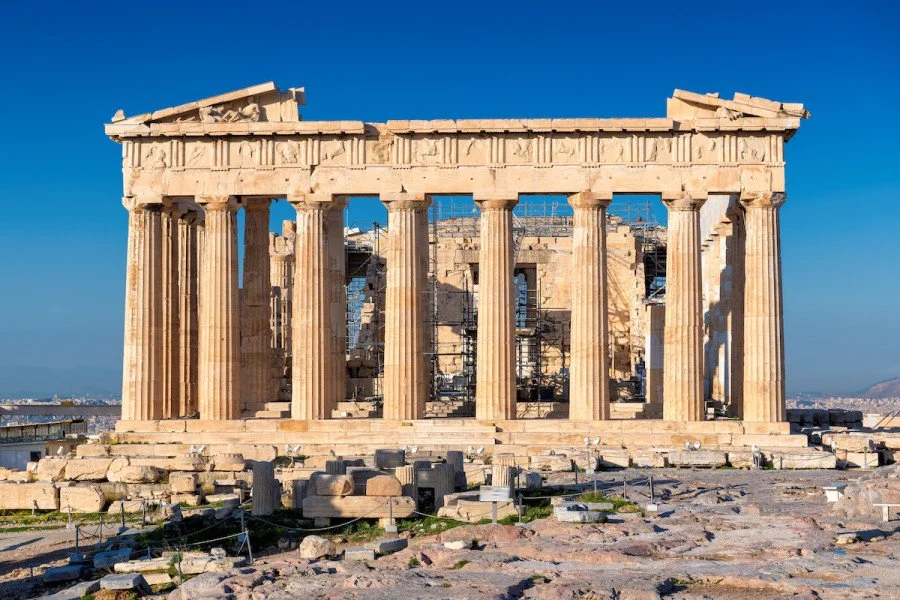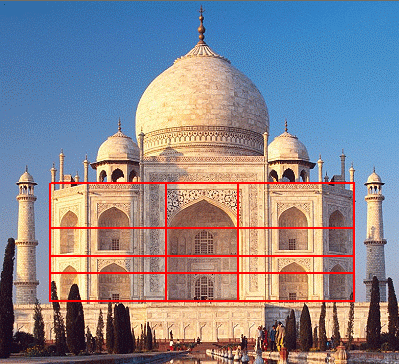That's why you think it's beautiful.
It’s aesthetically pleasing to look at, isn’t it? Accurate, symmetric architecture; attractive faces of celebrities; perfect, powerful nature (disregard that it’s a hurricane…)
Amber Heard, American actress
Image via
Taj Mahal, the jewel of India
Image via
While you may not be attracted by these exact pictures, there are definitely some which you like but cannot explain why.
Well, I can. With some maths help.
Simple is beautiful
There is actually a reason why we prefer certain shapes, human appearances, and visual objects in general. And it is not subjective.
There exists golden ratio (golden section, golden mean, divine proportion) in nature, which is the proportion between the length and width of the object, encircled by a rectangle, equalling 1:1.618 - a magical number Phi. The nature always seeks to achieve golden ratio, and every time it does, it immensely pleases our eyes!
… but why?
We can ask for the explanation from the professor of mechanical engineering at Duke University, Adrian Bejan, who notes that, evolutionarily, it’s easier for animals (humans including) to perceive the image scanning it from side to side, not up and down. I believe that is because we observe more space horizontally, and not vertically.
So in the golden ratio, the length is 1.168 times as long as the width, which means that it is easier for our eyes to perceive, and they are naturally attracted to these correctly-geometrically constructed beautiful figures. And, according to the professor, simple is beautiful:
“This is the best flowing configuration for images from plane to brain. When we see the proportions in the golden ratio, we are helped. We feel pleasure and we call it beauty.”
How the rule actually works
Here you can see that these objects actually follow the golden ratio.
And here is a more mathematical proof of the golden ratio of the building - looks convincing, doesn’t it?
a = 1.168b
Image via
The human body also seeks perfection.
Yes, there is a reason for why our arms dangles weirdly beneath our pelvis when we stand still, and why our noses are bigger than our eyes.
That being said, the human body is perfect — it follows the golden ratio.
Image via
Image via
Are celebrities (those who are praised for their appearance) even more perfect?
Well, we can measure it. The Golden Ratio of Beauty Phi determines how close to “perfect” one’s appearance is:
Bella Hadid is 94.35% physically perfect according to the Beauty Phi.
Image via
Beyoncé is honoured to have one of the most beautiful faces, as well.
Image via
So a simple Sherlock’s deduction would be that golden ratio explains why literally the whole world may go crazy about one person’s appearance.
But Watson, we have a problem!
… which is me wondering if it’s a simple coincidence that the most “perfect” faces belong to famous celebrities?
I reckon not. The Greek golden ratio is known for long, and by many. And their surgeon is definitely one of that many:
Hadid’s plastic surgery to achieve golden ratio It’s like being an architect of your face.
Image via
So my takeaway:
Surgery can make people look perfect, but only nature can make people be perfect.
Moreover, some claim that golden ratio has nothing to do with beauty. For instance, John Allen Paulos, a research mathematician at Temple University, argues:
“There’s no evidence for most of these claims. It’s a common rectangle.”
Which I find quite plausible, considering that you cannot find tons of images (be it of people or architecture) with golden ratio, meaning that, maybe, someone just looks for fun drawing challenges and draws spirals and rectangles over people’s faces.
Nevertheless, we can definitely call the golden ratio a “driver” of our eyes: sometimes we arrive at unexpected destinations, or have a weirdly long lay-over somewhere.
But drivers also sleep, and that is when, I believe, the time comes for our subjective visual preferences.
For instance, I know that you think that Reg is ugly. I know it doesn’t follow the golden ratio.
But I. Can’t. Help. Falling in love. With. It.
Featured image via



















